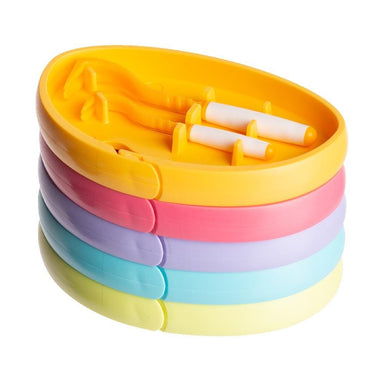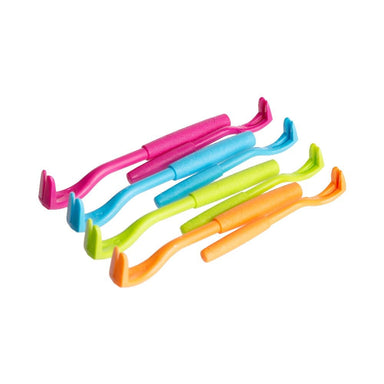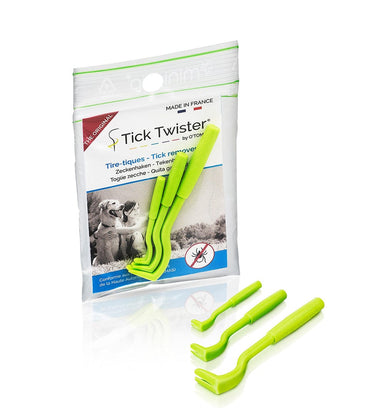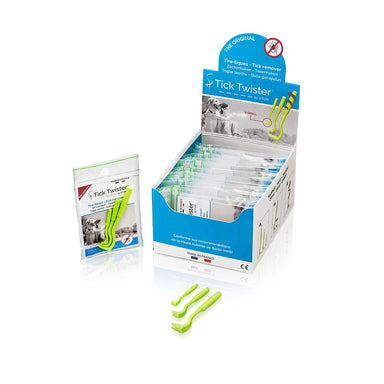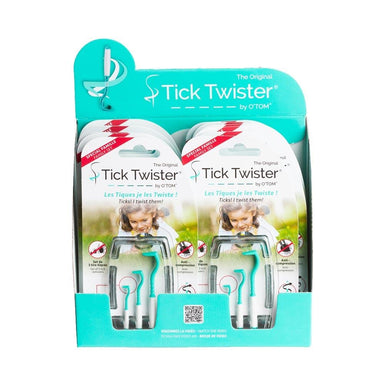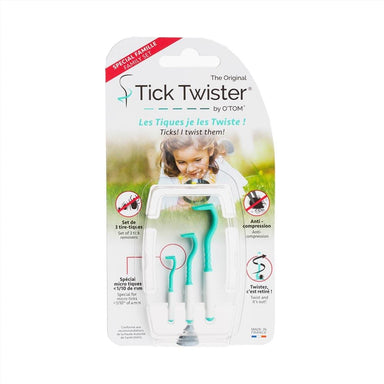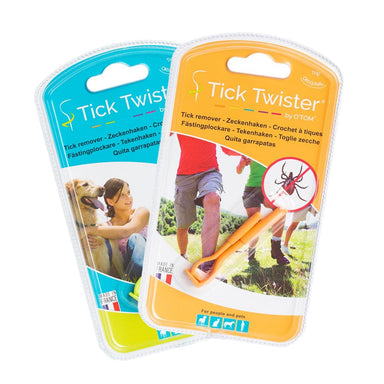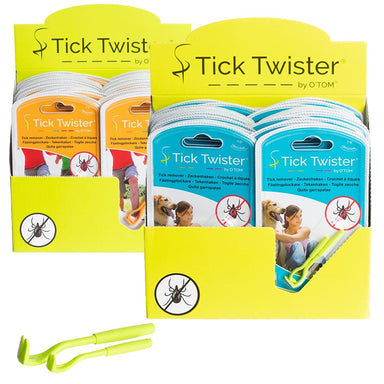Although not every tick carries disease, immediate removal of an attached tick is recommended.
DO NOT use petroleum jelly, any liquid solutions, or freeze / burn the tick, as this is likely to stimulate it to regurgitate (vomit) saliva and stomach contents, increasing the chance of infection.
1. Ideally, wear rubber / plastic gloves. Choose the most suitable Tick Twister® tool, according to the size of the tick.
2. Engage the tool by approaching the tick from the side (the body of the tick is flat when unfed) until it is held securely.
3. Lift the tool very lightly and TURN IT (clockwise or counter-clockwise). The tick detaches itself after 2-3 rotations. Do not pull the tick, lever it (like a crowbar), or twist in one direction then the other.
4. After removing the tick, disinfect the bite site and wash hands with soap and water.
You may want to save the tick for identification in case the person or animal the tick was attached to becomes ill. You can store it in a sealed plastic grip seal bag in your freezer.
If you don’t want to keep the tick, the best way to dispose of it is to place it in a tissue and squash it. Then flush the tissue down the toilet or dispose of it in a dustbin.








